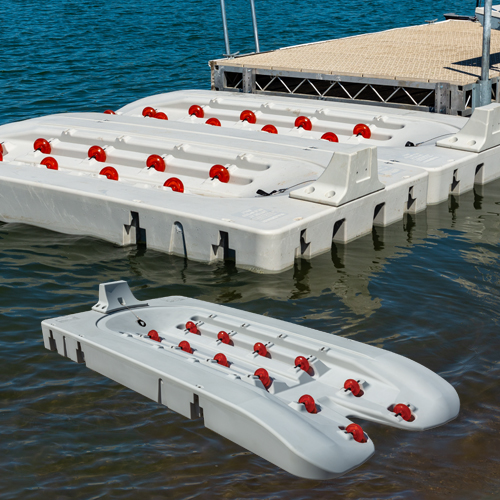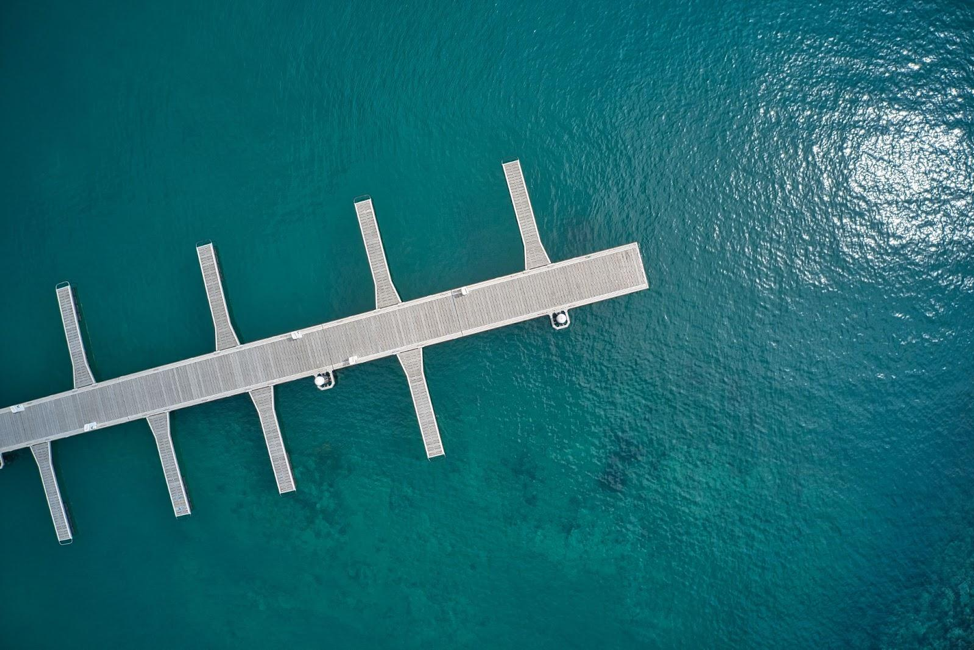Develop the Perfect Docking Service With Floating Docks
Floating docks present a functional option for a range of maritime needs, adjusting perfectly to varying water levels and varied vessel kinds. Their modular nature enables quick installment and moving, yet the option of proper materials and style features is essential for making certain both performance and visual charm. As we check out the necessary elements that add to the performance of floating docks, several vital elements regarding security and upkeep will certainly arise, questioning regarding just how to optimize your docking experience. The subsequent conversation will brighten these vital considerations.

Advantages of Floating Docks
Floating docks offer many benefits that make them a perfect option for various maritime applications. Unlike repaired docks, floating docks rise and autumn with the trend, making sure regular access for vessels.
Furthermore, floating docks are typically simpler and quicker to mount contrasted to standard set frameworks. Their modular style enables simple setting up and disassembly, promoting maintenance and relocation when needed. This adaptability is particularly beneficial for temporary applications or in atmospheres where problems might alter.
Floating docks additionally tend to be extra ecologically pleasant, as they lessen disturbance to the seabed and bordering aquatic ecological communities. Their buoyant nature reduces the danger of damages to aquatic life, advertising a much healthier environment. These docks can be personalized to suit various vessel dimensions, making certain that they satisfy details operational demands.
Eventually, the mix of versatility, simplicity of installment, and environmental considerations makes floating docks a highly efficient solution for a large variety of maritime needs.
Choosing the Right Materials
Choosing the appropriate materials for floating docks is crucial to guarantee sturdiness, stability, and long life. The choice of materials directly impacts the dock's efficiency in different environmental problems, including exposure to water, sunshine, and possible wear from marine web traffic.
Common products made use of for floating docks include light weight aluminum, timber, and high-density polyethylene (HDPE) Light weight aluminum is lightweight, corrosion-resistant, and needs marginal maintenance, making it an outstanding option for long life. Nonetheless, its preliminary price can be greater contrasted to other products.
Timber, while visually enticing and offering a typical appearance, can be prone to rot and insect damage if not effectively dealt with. Using pressure-treated wood or naturally long lasting species like cedar or redwood can minimize these problems.
HDPE is a preferred selection because of its resistance to UV rays and chemicals, along with being eco-friendly. floating docks. It is lightweight and readily available in different shades, permitting customization
Ultimately, the best material choice will certainly depend upon certain needs, consisting of budget, preferred looks, and environmental considerations. Careful evaluation of these aspects will cause a effective and resilient floating dock option.
Layout Considerations for Stability
When creating floating docks, guaranteeing stability is a basic aspect that can substantially impact their functionality and safety and security. Stability in floating dock design is affected by various elements, including buoyancy, weight distribution, and the arrangement of parts. An ideal buoyancy system must use products that supply enough lift while minimizing weight. This equilibrium ensures that the dock stays above water, even under varying loads.
Weight distribution is crucial; uniformly distributing lots across the dock protects against turning and boosts stability. This can be accomplished through strategic placement of docking equipment, such as fenders and cleats, as well as correct spacing of floats. Furthermore, the dimensions of the dock need to be attentively intended. Wider styles can provide enhanced stability, particularly in harsh water problems, while longer docks may require extra assistances to stop sagging.
An additional crucial factor to consider is the ecological impact, consisting of wave action and wind. Integrating attributes such as sidewalls or skirting can help mitigate the results of environmental forces, keeping security in damaging problems. Inevitably, a combination of thoughtful layout, product choice, and understanding of environmental aspects will certainly yield a drifting dock that satisfies both security go to this site and safety needs.
Installment Tips and Methods

Following, protect the essential licenses and abide by neighborhood laws, which might determine installation methods and environmental factors to consider. If needed, engage a certified service provider experienced in floating dock setups. Usage top quality products made for aquatic environments to enhance resilience and durability.
When positioning the dock, align it alongside the shoreline to promote simple accessibility. Guarantee that the anchoring system is durable, using cinder block or helical supports to support the dock against wind and wave activity. It's vital to account for seasonal water level changes, including prospective ice activity in chillier environments.
During the installation, verify the dock's floatation and stability before wrapping up the anchoring. Frequently evaluate the installment for any signs of wear or damages. By adhering to these pointers and strategies, you can attain a safe and secure, functional, and cosmetically pleasing floating dock installation that fulfills your demands.
Upkeep and Treatment Standards
Maintaining and caring for floating docks is important to lengthening their lifespan and making sure secure usage. Normal assessments should be carried out to identify any indications of wear, damage, or aquatic development. Try to find cracks, loose fittings, or stained locations on the dock's surface area, as these issues can endanger structural integrity.
Cleansing is necessary. Utilize a stress washer to get rid of algae, barnacles, and particles, which can gather gradually. For stubborn development, take into consideration eco-friendly cleaning representatives that will not damage marine life.
Additionally, check the mooring lines and supports frequently to ensure they are protected and totally click for info free from deterioration. Change any kind of torn or harmed lines promptly to preserve stability.
Throughout severe weather, such as tornados or freezing conditions, take precautionary steps. Secure the dock with added mooring lines and, if possible, remove any type of detachable parts to avoid damage.
Conclusion
In conclusion, the implementation of floating docks provides a effective and flexible docking remedy suitable for different maritime applications. With correct installation and normal maintenance, floating docks can supply effective and reliable docking experiences for a vast range of vessels.
As we discover the important elements that add to the efficiency of floating docks, a number of go to website crucial aspects concerning security and maintenance will emerge, raising questions concerning just how to maximize your docking experience. Unlike dealt with docks, floating docks surge and fall with the tide, making sure constant access for vessels.When making floating docks, making certain security is a basic aspect that can substantially affect their performance and safety and security. Security in floating dock design is influenced by different elements, including buoyancy, weight distribution, and the setup of parts. Inevitably, a combination of thoughtful style, material choice, and understanding of environmental elements will certainly produce a floating dock that satisfies both security and safety needs.